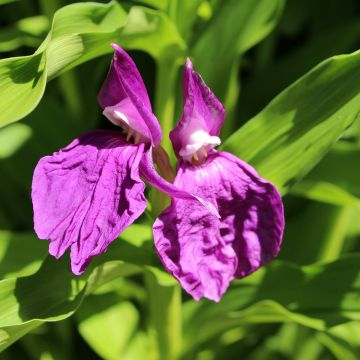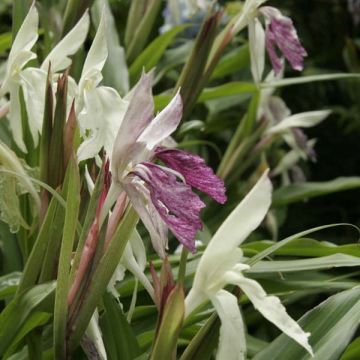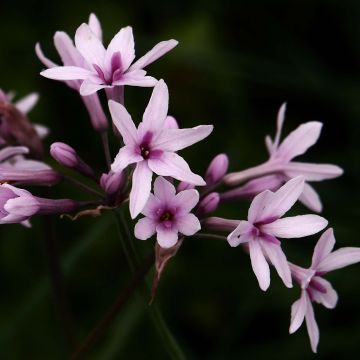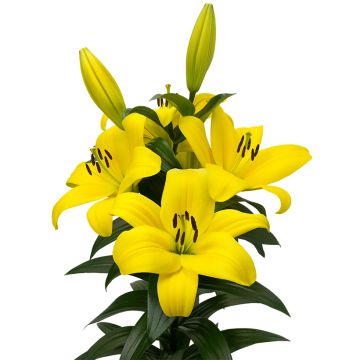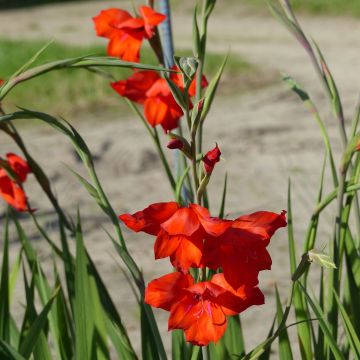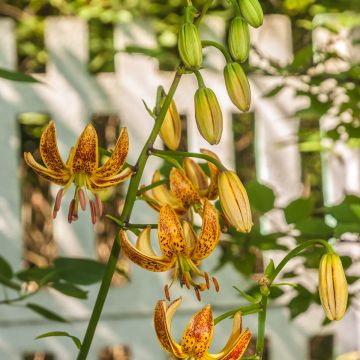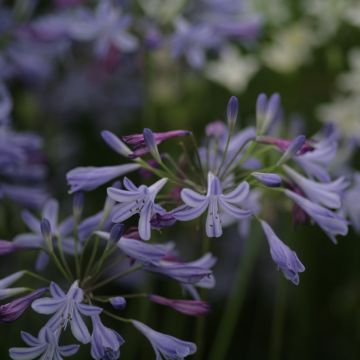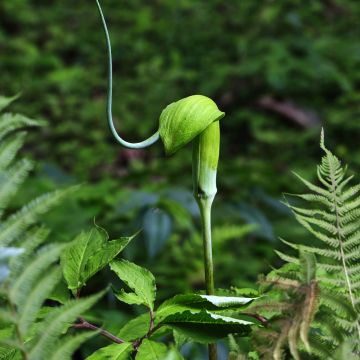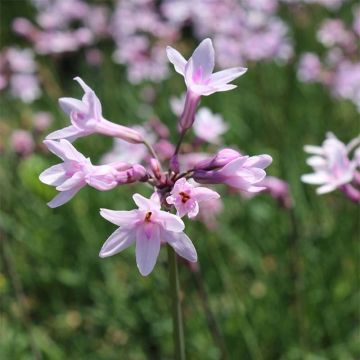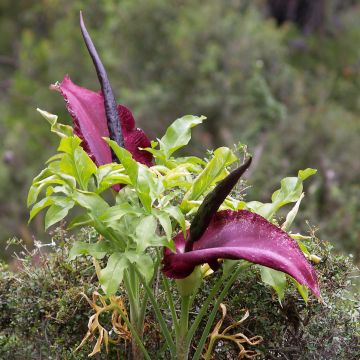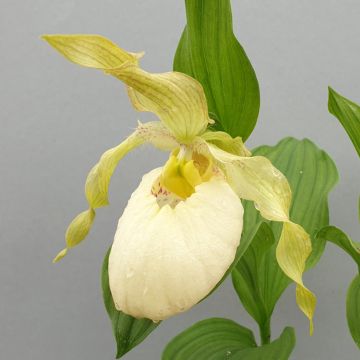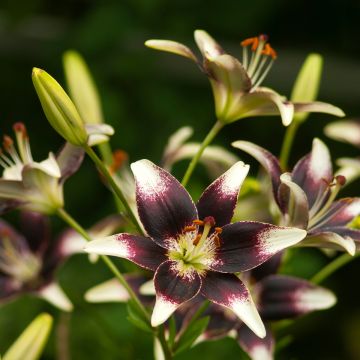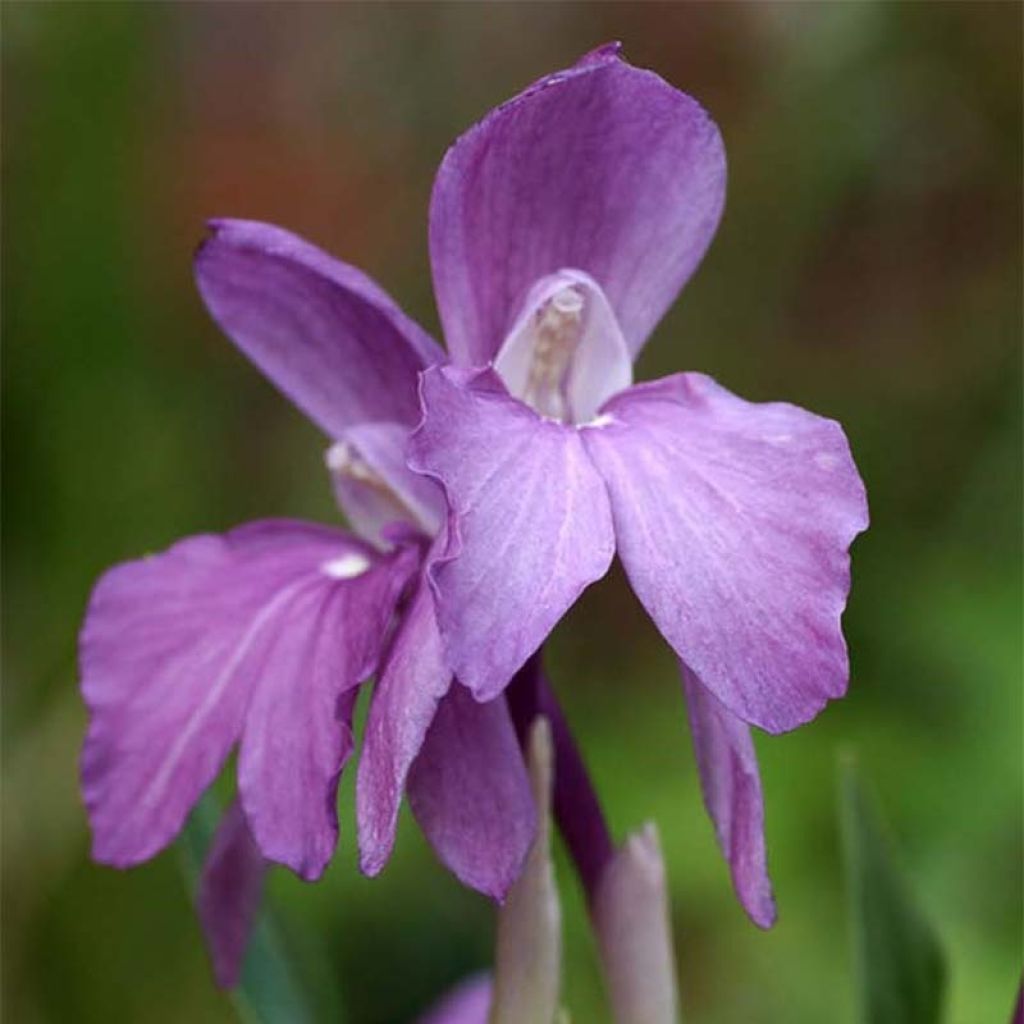

Roscoea humeana
Roscoea humeana
Roscoea humeana
Hume's Roscoea
This plant carries a 6 months recovery warranty
More information
We guarantee the quality of our plants for a full growing cycle, and will replace at our expense any plant that fails to recover under normal climatic and planting conditions.
From €5.90 for pickup delivery and €6.90 for home delivery
Express home delivery from €8.90.

Does this plant fit my garden?
Set up your Plantfit profile →
Description
Roscoea humeana is a rare, collector's bulb from the high mountains of China. This very cold-hardy plant, sometimes called orchid ginger, will be appreciated for its unusual and long-lasting violet flowering. Its foliage emerges from the ground in spring and disappears in winter. You can plant it in a moist rockery or a raised bed, preferably in partial shade, with small ferns, for example.
Roscoea humeana belongs to the Zingiberaceae family. Native to the Himalayas, this alpine botanical species grows in moist, light, and acidic soils (humic, even peaty), in non-scorching sun. It is a herbaceous perennial with a tuberous root. The young shoots emerge quite late in spring. The vegetation consists of stems bearing long linear, bright green leaves, measuring about 25 cm (10in) long and arranged in a clump. Flowering begins in May-June and continues until July in the form of tall flower stems, 25 to 30 cm (10 to 12in) high, bearing short floral spikes. The 4 cm (2in) diameter flowers consist of a long tube widening into 3 petals, with the upper one forming a helmet and the lower one a lip. Their colour is an intense purple. The fleshy roots develop in clusters from a central rhizome.
Roscoea humeana pairs well with rodgersias, cimicifugas, and hostas on the edge of woodlands and ericaceous beds. It is also a very pretty plant for partially shaded alpine rockeries where it can be grown with small spring bulbs, gentians, or saxifrages. Plant the rhizomes quite deeply, as this will allow them to withstand the strongest frosts.
Report an error about the product description
Roscoea humeana in pictures
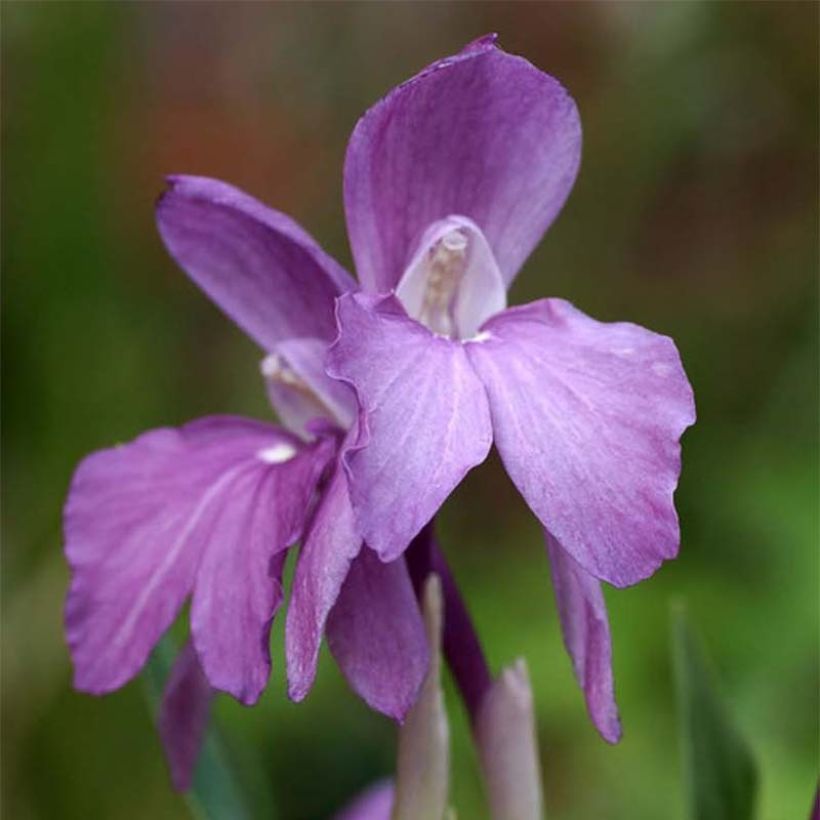

Plant habit
Flowering
Foliage
Botanical data
Roscoea
humeana
Zingiberaceae
Hume's Roscoea
China
Other Roscoea
Planting and care
Roscoea humeana is best planted in spring, at a depth of 8-12 cm (3-5in) and 20 cm (8in) apart, in partial shade or morning sun, in neutral to acidic soil (heathland, humus, hydrangea, rhododendron or azalea beds). This mountain plant cannot tolerate limestone, drought, or heatwaves. The bulbs are very hardy down to -20°C (-4°F) in light, well-drained soil with thick mulch. You can also grow them in pots, 3 per 18 cm (7in) pot, preferably in partial shade.
Planting period
Intended location
Care
-
, onOrder confirmed
Reply from on Promesse de fleurs
Hardy summer bulbs
Haven't found what you were looking for?
Hardiness is the lowest winter temperature a plant can endure without suffering serious damage or even dying. However, hardiness is affected by location (a sheltered area, such as a patio), protection (winter cover) and soil type (hardiness is improved by well-drained soil).

Photo Sharing Terms & Conditions
In order to encourage gardeners to interact and share their experiences, Promesse de fleurs offers various media enabling content to be uploaded onto its Site - in particular via the ‘Photo sharing’ module.
The User agrees to refrain from:
- Posting any content that is illegal, prejudicial, insulting, racist, inciteful to hatred, revisionist, contrary to public decency, that infringes on privacy or on the privacy rights of third parties, in particular the publicity rights of persons and goods, intellectual property rights, or the right to privacy.
- Submitting content on behalf of a third party;
- Impersonate the identity of a third party and/or publish any personal information about a third party;
In general, the User undertakes to refrain from any unethical behaviour.
All Content (in particular text, comments, files, images, photos, videos, creative works, etc.), which may be subject to property or intellectual property rights, image or other private rights, shall remain the property of the User, subject to the limited rights granted by the terms of the licence granted by Promesse de fleurs as stated below. Users are at liberty to publish or not to publish such Content on the Site, notably via the ‘Photo Sharing’ facility, and accept that this Content shall be made public and freely accessible, notably on the Internet.
Users further acknowledge, undertake to have ,and guarantee that they hold all necessary rights and permissions to publish such material on the Site, in particular with regard to the legislation in force pertaining to any privacy, property, intellectual property, image, or contractual rights, or rights of any other nature. By publishing such Content on the Site, Users acknowledge accepting full liability as publishers of the Content within the meaning of the law, and grant Promesse de fleurs, free of charge, an inclusive, worldwide licence for the said Content for the entire duration of its publication, including all reproduction, representation, up/downloading, displaying, performing, transmission, and storage rights.
Users also grant permission for their name to be linked to the Content and accept that this link may not always be made available.
By engaging in posting material, Users consent to their Content becoming automatically accessible on the Internet, in particular on other sites and/or blogs and/or web pages of the Promesse de fleurs site, including in particular social pages and the Promesse de fleurs catalogue.
Users may secure the removal of entrusted content free of charge by issuing a simple request via our contact form.
The flowering period indicated on our website applies to countries and regions located in USDA zone 8 (France, the United Kingdom, Ireland, the Netherlands, etc.)
It will vary according to where you live:
- In zones 9 to 10 (Italy, Spain, Greece, etc.), flowering will occur about 2 to 4 weeks earlier.
- In zones 6 to 7 (Germany, Poland, Slovenia, and lower mountainous regions), flowering will be delayed by 2 to 3 weeks.
- In zone 5 (Central Europe, Scandinavia), blooming will be delayed by 3 to 5 weeks.
In temperate climates, pruning of spring-flowering shrubs (forsythia, spireas, etc.) should be done just after flowering.
Pruning of summer-flowering shrubs (Indian Lilac, Perovskia, etc.) can be done in winter or spring.
In cold regions as well as with frost-sensitive plants, avoid pruning too early when severe frosts may still occur.
The planting period indicated on our website applies to countries and regions located in USDA zone 8 (France, United Kingdom, Ireland, Netherlands).
It will vary according to where you live:
- In Mediterranean zones (Marseille, Madrid, Milan, etc.), autumn and winter are the best planting periods.
- In continental zones (Strasbourg, Munich, Vienna, etc.), delay planting by 2 to 3 weeks in spring and bring it forward by 2 to 4 weeks in autumn.
- In mountainous regions (the Alps, Pyrenees, Carpathians, etc.), it is best to plant in late spring (May-June) or late summer (August-September).
The harvesting period indicated on our website applies to countries and regions in USDA zone 8 (France, England, Ireland, the Netherlands).
In colder areas (Scandinavia, Poland, Austria...) fruit and vegetable harvests are likely to be delayed by 3-4 weeks.
In warmer areas (Italy, Spain, Greece, etc.), harvesting will probably take place earlier, depending on weather conditions.
The sowing periods indicated on our website apply to countries and regions within USDA Zone 8 (France, UK, Ireland, Netherlands).
In colder areas (Scandinavia, Poland, Austria...), delay any outdoor sowing by 3-4 weeks, or sow under glass.
In warmer climes (Italy, Spain, Greece, etc.), bring outdoor sowing forward by a few weeks.

































